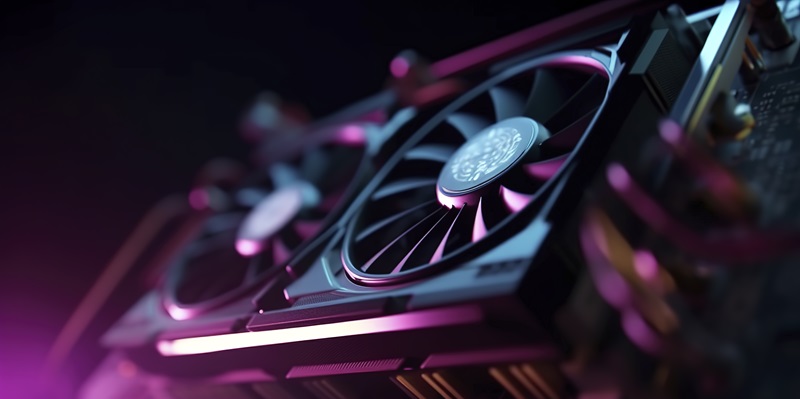In the last quarter of 2023, the PC GPU market experienced a notable upswing, with shipments climbing to 76.2 million units. This represented a 6% increase from the previous quarter and an impressive 24% growth compared to the year before. Analysts looking at these figures suggest a robust upward trajectory for the market, projecting that by 2026, the total GPU install base could reach a staggering 5 billion units. The trend indicates a substantial appetite for advanced graphics capability, likely driven by advancements and greater demand in gaming and professional arenas. Discrete GPUs, which cater to more high-performance requirements, are predicted to account for 30% of the market share, underscoring the market’s dynamic growth and the consumers’ rising interest in superior graphics performance.
Notebook GPUs Leading the Charge
The PC market is witnessing a clear shift toward mobile computing, evidenced by a noteworthy 32% increase in notebook GPU shipments. This uptick reflects a consumer trend that leans heavily toward laptops that don’t sacrifice graphical prowess for the sake of portability. As the demand for powerful yet mobile GPUs grows, desktop graphics solutions are feeling the pressure, experiencing a small 1% dip in shipments. This marginal decline in desktop graphics card shipments, including Add-In Boards (AIBs), might be indicating a deeper change in consumer preferences, with individuals increasingly gravitating toward laptops. The convenience of mobility coupled with high graphic performance seems to be reshaping the landscape of personal computing, signaling a probable continued increase in laptop adoption at the expense of the traditional desktop setup. This trend carries implications for manufacturers and could prompt a strategic shift in focus toward the burgeoning notebook GPU segment while reevaluating the role of desktop graphics solutions.
Competitive Market Landscape
Intel Gains as AMD and NVIDIA Adjust
In the dynamic landscape of the GPU industry, there has been a noteworthy change as Intel made commendable strides forward by increasing its market share by 2.8%. Meanwhile, industry heavyweights AMD and NVIDIA experienced marginal drops in their shares, 1.4% and 1.36%, respectively. This shift heralds a triumph for Intel, which has been working diligently to improve its standing in the market but also suggests a potential shift in the strategies of the major players within the sector and possibly points to a change in what consumers are prioritizing when it comes to choosing GPUs.
The implications of this rebalancing act go beyond simple statistics. For Intel, this growth could signal resurgence and a more aggressive stance in the GPU space, historically dominated by AMD and NVIDIA. On the other hand, AMD and NVIDIA’s slight dips may prompt a rethink in terms of innovation, marketing, and customer engagement to maintain their leadership positions. All in all, this change in market dynamics indicates a more competitive environment that may lead to more choices and potentially better products for consumers in the future.
Discrete GPU Market Breakdown
Intel has made notable progress in the discrete GPU market, underscored by a 10.5% rise in shipments. This increase suggests that Intel is taking bold steps to regain its foothold in this competitive space. Concurrently, AMD and NVIDIA have witnessed shipment downturns by 2.9% and 1.5%, respectively. These declines could be indicative of a saturated market, distribution challenges, or a strategic pivot toward advanced GPU technologies. As the industry eagerly anticipates the release of discrete GPU-specific data, there’s a keen interest in how these trends will clarify the tactics these tech giants are employing. A detailed analysis of the discrete GPU figures is highly awaited and is expected to offer deeper insights into the dynamics between these major players and their competition strategies within the GPU sector.
Trending CPU Shipment Insights
Dominance of Notebook CPUs
In the CPU market, notebooks are increasingly prevalent, accounting for 69% of CPU shipments, overshadowing desktops at 31%. This shift suggests a rising preference for mobile computing, likely influenced by the growing trend of remote work and the demand for portable devices that facilitate business operations on the go. The desktop market appears to be contracting in the face of this mobile-first approach, which is also reflected in the heightened interest in mobile GPUs. The convenience and versatility of notebooks are driving changes in the CPU landscape, where portability is becoming a key factor in consumer and enterprise computing choices. This evolving marketplace underlines the changing nature of work and personal computing, as users increasingly favor devices that are not anchored to a single location but rather offer the capability to perform tasks from virtually anywhere.
GPU Attachment and CPU Market Trends
Despite a slight dip in overall PC GPU attachment rates, down to 113%, desktop Add-In Boards (AIBs) with dedicated graphics cards are experiencing growth. A significant 6.8% increase since the last quarter indicates that demand for robust discrete GPUs is staying strong, likely fueled by gaming enthusiasts, content creators, and professionals who require high-performance computing. This trend of needing powerful graphics capabilities goes against the grain of the broader shift toward more mobile computing options.
Simultaneously, the central processing unit (CPU) market is demonstrating a notable surge. Quarter-over-quarter growth is at 9%, with an even more impressive 24% increase year-over-year. This signifies a robust and expanding PC market that appears to be defying trends of consumers gravitating toward mobile options. The consistent demand for high-end GPUs and CPUs suggests that despite the rise in mobile device usage, there remains a solid and growing base of users who prioritize computing power and performance, likely for more intensive applications that mobile solutions currently fail to satisfy.

